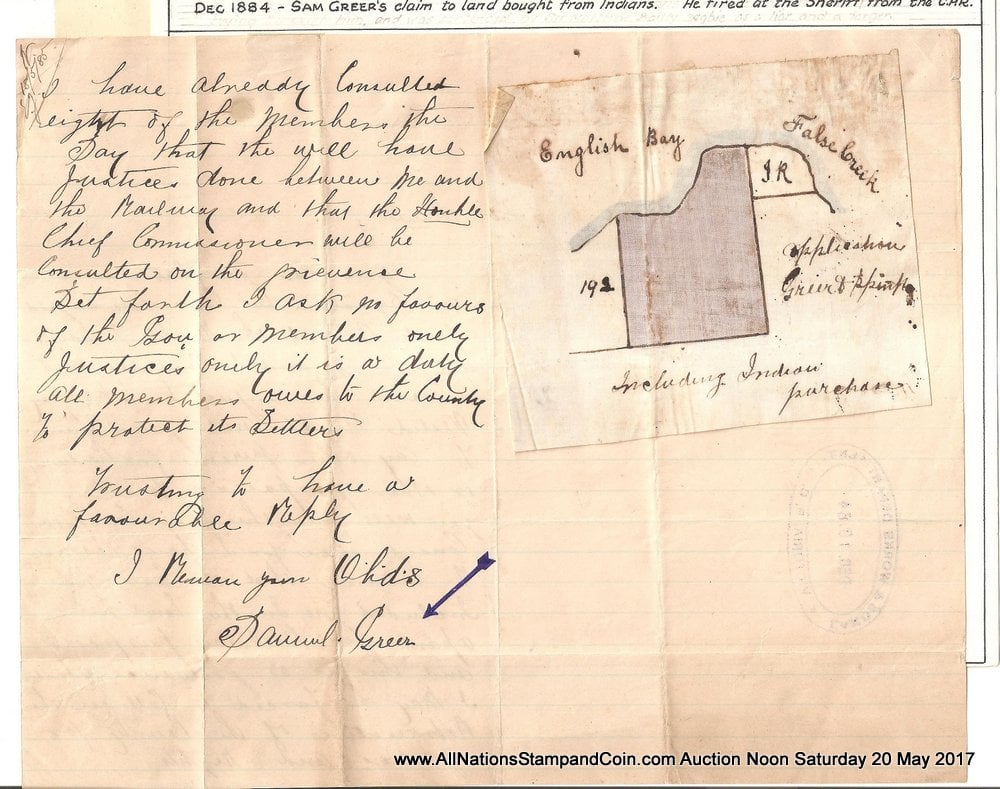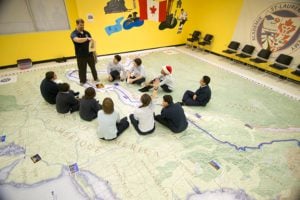The harsh Canadian frontier, a sketchy land claim, a stubborn settler and a shoot-out.
That’s just scratching the surface of the story behind the historic map of Vancouver’s Kitsilano neighbourhood that sold for an astonishing $24,000 at an All Nations Stamp and Coin auction on May 20. Initially estimated to go for $5,000, the 1884 hand drawn map is a land claim for the area now known as Kits Beach. Canadian Geographic spoke to Brian Grant Duff from All Nations Stamp and Coin for some insight into the map’s tumultuous past.
Where does this map come from?
It’s a land claim. It’s part of a little group of letters, of which this is the fourth, and it has a hand drawn map with it. The Sam Greer letters are part of a collection from Gerald E. Wellburn, who gathered historical documents of Canada, Great Britain and British Columbia.
Who was Sam Greer?
Greer, or “Gritty,” was an early farmer who came to the Cariboo region from Northern Ireland during Vancouver’s Gold Rush. Today, he’s probably mostly known for his pretty rough, long and controversial battle with the CPR and for his daughter, Jessie Columbia Hall, who was a famous socialite after his death in 1925.
Why is this map so controversial?
What Sam Greer was trying to do with this letter was retroactively support his land claim. According to Greer, he bought some land in 1882, but he could not settle on it because two Indigenous men and their wives were already using the land and it was technically owned by the province. In spite of that, Greer hired an agent named McTiernan to buy their dwellings. McTiernan had one of them sign over his dwelling to Greer; however, the other man did not sign over his dwelling, and subsequently died. Greer was definitely in the wrong when he acquired the land, and the controversy then played out for the rest of his life.
How did the CPR become involved?
The land was given to the Canadian Pacific Railway in 1885, and Greer resisted in a number of ways — tearing up railway ties, putting up fences, fending them off with an axe and another time firing his shotgun at the sheriff and deputy and wounding them. He was arrested several times for resisting the CPR, and served some time in New Westminster at the British Columbia Penitentiary. It gives you an idea of the frontier life.
What finally happened to the land?
Greer fought for the rights to the land until he died in 1925, but he never did get the title. The interesting thing is that the area never really got developed by anyone. Maybe if it had, we wouldn’t have Kits Beach today.
On the origin of the name “Kitsilano”
It’s interesting. It used to be called “Greer’s Beach” but the city later asked Johnathan Miller, Vancouver’s first postmaster and a former Gastown lawman, what he thought the area should be changed to. He approached a local Squamish chief to ask what they called it, and they said Khatsahlano, so they named it Kitsilano [an Anglicization of the traditional name].
The final letter from Greer is set to be auctioned off as part of a Canada 150 auction on July 1. This interview has been edited and condensed for clarity.





